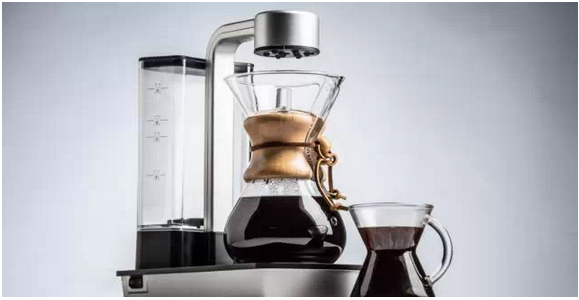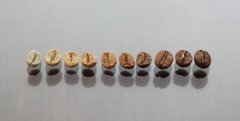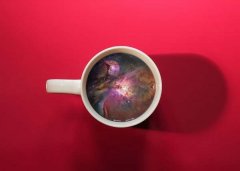The degree of coffee extraction how to extract coffee
The water temperature of brewing coffee should be inversely proportional to the degree of baking.
All kinds of brewing method extraction water temperature is not consistent, American electric drip rate kettle due to different brands, mostly controlled in the constant temperature extraction range of 92 ℃-96 ℃, espresso machine can be based on the baking degree used by each store, the water temperature is set in the range of 88 ℃-93 ℃, basically, the deeper the baked, the lower the water temperature is, about 88 ℃, and the shallower the roasting is, the higher the water temperature is, about 93 ℃.
As for hand flushing, siphoning, filter pots and smart filter cups. All manual extraction, it is difficult to achieve constant temperature extraction, water temperature is more elastic, taste spectrum fluctuation is greater than coffee machine, more challenging, this is the reason why players are infatuated with handmade coffee. The water temperature of Japanese hand flushing pot is the most elastic, which varies according to the baking degree and the locking temperature performance of the hand pot, and the extraction temperature is generally between 82 ℃ and 94 ℃. The water temperature of siphon pot extraction is also high and low, about 88 ℃-94 ℃ for high temperature extraction and 86 ℃-92 ℃ for low temperature extraction.
More than 90 ℃, for high temperature extraction, it is easy to increase the extraction rate, increasing alcohol thickness, aroma and scorching bitterness, so it is disadvantageous to deep roasted beans, but it is more suitable for hard beans and shallow roasted coffee, because slightly higher extraction water temperature can upgrade the sharp acid of shallow baked beans to changing active acid, but not too much, the extraction temperature of hand and siphon pot exceeds 94 ℃, it will dissolve more high acid bitterness.
For low temperature extraction below 90 ℃, it will inhibit the extraction rate, reduce aroma and bitter taste, and is more suitable for medium-deep or deep-baked beans, but it should not be too low. Low-temperature extraction by hand should not be less than 82 ℃, so as not to pour out dull coffee. Because low temperature is not conducive to shallow baked beans, only low acid substances that are easy to dissolve can be extracted, but not enough sweet flavor and high sweet and bitter substances can be extracted. as a result, the flavor of shallow roasted coffee brewed at low temperature is not balanced, and there is only one dead acid. Extremely unpalatable, should we use high temperature or low temperature extraction? According to the baking degree of coffee beans, deep roasted beans should be extracted at low temperature, while shallow roasted beans should be extracted at high temperature, that is to say, the baking degree should be opposite to the temperature of boiling water.
The fiber quality of deep-baked beans is seriously damaged, and its structure is loose and fragile, so it is appropriate to be gentle and extracted at a slightly lower water temperature, so as not to extract too many high-coke bitter ingredients; on the contrary, the fiber of shallow baked beans is less damaged and denser, and it is not easy to extract than deep baking. If the shallow roasted coffee is brewed at a water temperature below 82 ℃, it will only extract low acid, unable to extract enough sweetness and a small part of high sweet bitterness and fragrant wood ingredients, resulting in a very uneven and irregular dead sour taste.

Important Notice :
前街咖啡 FrontStreet Coffee has moved to new addredd:
FrontStreet Coffee Address: 315,Donghua East Road,GuangZhou
Tel:020 38364473
- Prev

Do not drink unbaked coffee roasting degree
The heat of shallow roasting is mild, because the sour aroma of flowers and fruits is most preserved by fermentation, so it is easy to smell the sour aroma of coffee. If the baking continues, that is, from the end of the first explosion to the middle baking before the second explosion, or even the medium and deep baking from the first explosion to the second explosion, most of the sour aroma of the fermentation catalysis has been broken up, instead of the taste spectrum of the sugar browning reaction (Sugar Browning) and Mena reaction.
- Next

Factors affecting Italian concentration of Clean Coffee head
Three groups of coffee machines, grinders and producers were divided into the following groups: the first group, the second group was cleaned with powder once a day, and the third group was cleaned with powder once a week. The process of not cleaning during the experiment lasted 19 days. Each group of coffee machines is recycled to ensure that each group is used equally. Through the coffee machine temperature and pressure measuring instrument, we checked each machine
Related
- Beginners will see the "Coffee pull flower" guide!
- What is the difference between ice blog purified milk and ordinary milk coffee?
- Why is the Philippines the largest producer of crops in Liberia?
- For coffee extraction, should the fine powder be retained?
- How does extracted espresso fill pressed powder? How much strength does it take to press the powder?
- How to make jasmine cold extract coffee? Is the jasmine + latte good?
- Will this little toy really make the coffee taste better? How does Lily Drip affect coffee extraction?
- Will the action of slapping the filter cup also affect coffee extraction?
- What's the difference between powder-to-water ratio and powder-to-liquid ratio?
- What is the Ethiopian local species? What does it have to do with Heirloom native species?

